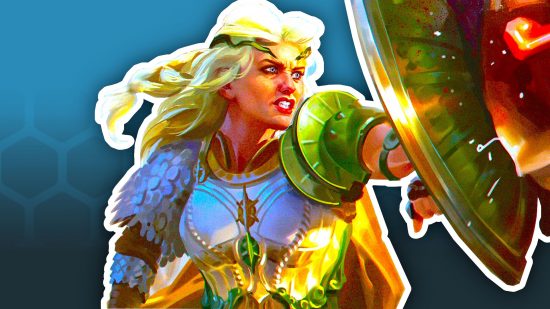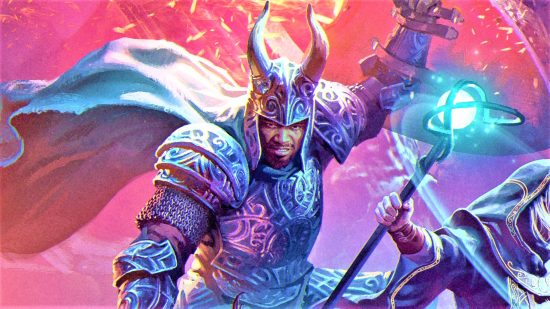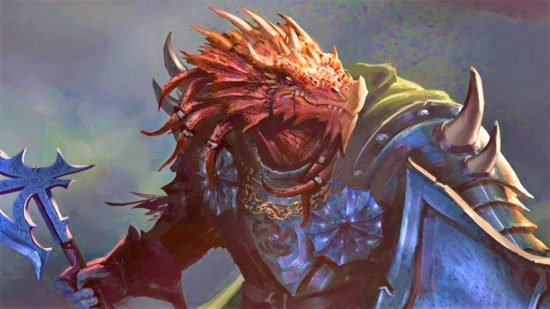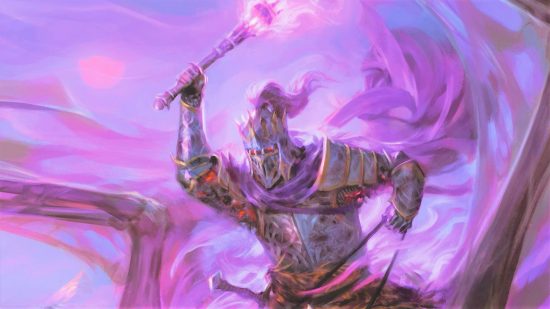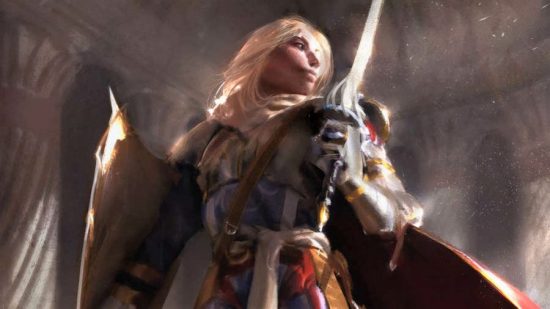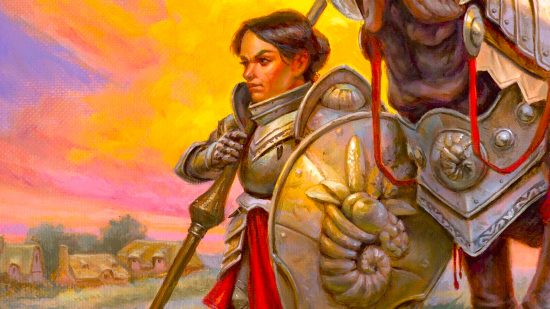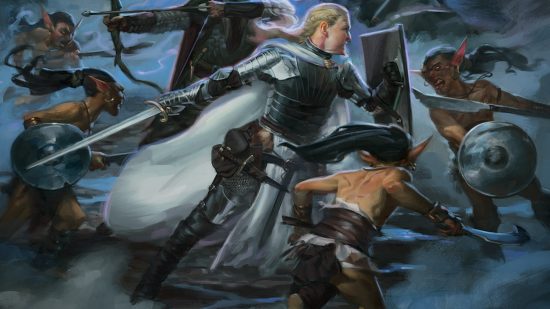Ranking the best Paladin subclasses 5e has to offer is a tough job, but we’ve gone ahead and done it. This is an excellent class that can perform a range of roles, but having so many great DnD Paladin subclasses to choose from can make that final decision even harder. For any Dungeons and Dragons player looking to do some smiting, we’ve made a ranked list that’ll help you find your perfect Paladin.
If you’re still not sure the Paladin 5e is the best of the DnD classes for you to play, be sure to check out our other handy guides on the subject. These give you the key details of the Paladin and their party compatriots, as well as advice on what DnD races and DnD backgrounds to pair with your choice. Once you’re sure this is the right path for your next DnD character build, read on.
From worst to best, here are the DnD Paladin subclasses 5e, ranked:
- 9. Oath of the Crown 5e
- 8. Oath of the Watchers 5e
- 7. Oath of Glory 5e
- 6. Oath of the Ancients 5e
- 5. Oathbreaker 5e
- 4. Oath of Redemption 5e
- 3. Oath of Devotion 5e
- 2. Oath of Conquest 5e
- 1. Oath of Vengeance 5e
9. Oath of the Crown 5e
Found in: Sword Coast Adventurer’s Guide
Honestly, even the ‘worst’ Paladin subclass is pretty good. The Oath of the Crown 5e is for Paladins who value law, loyalty, and the ideals of civilization. It’s a subclass for players who enjoy area control and strategic defense over dealing lots of damage.
Your Channel Divinity abilities compel enemies to face you (making them unable to move a certain distance) and keep your allies topped up on hit points. At higher levels, you can choose to take damage for your friends. At the top of the DnD level up tree, you’ll be better at avoiding non-magical damage, certain conditions, and the consequences of a failed Wisdom saving throw.
Crown Paladins are sturdy and can turn the tide of battle if they manage the area carefully. But their spell list is pretty weak, and comparatively their abilities just aren’t as impressive as the other Paladins. If the flavor and playstyle sound like your thing, though, there’s no reason not to go for the Crown.
8. Oath of the Watchers 5e
Found in: Tasha’s Cauldron of Everything
The Oath of the Watchers 5e subclass has plenty to offer a Paladin player, but it suffers from two major flaws. Firstly, like the Crown, its general abilities are a little underwhelming when compared to other Paladin subclasses. And secondly, many of its abilities are highly situational – potent in the right encounter, but useless otherwise.
The Watchers’ Channel Divinity can protect your allies against a range of saving throws, or it can turn any aberrations, celestials, elements, fey, or fiends you might be up against. This is the crux of the oath – you’re sworn to battle otherworldly creatures wherever they may roam. Later abilities have similar themes, allowing you to deal damage to a creature when an enemy resists its saving throws or gain advantage against your enemies of choice.
Plus, there’s an excellent seventh-level feature that gives all your nearby allies a bonus to initiative rolls. Combine this with some neat utility spells, and you’ve got a generally strong Paladin – but one that’s a bit inconsistent in the wrong DnD campaigns.
7. Oath of Glory 5e
Found in: Tasha’s Cauldron of Everything
The Oath of Glory 5e Paladin is all about grand deeds of heroism. In practice, this means feats of athletics and speed in combat, as well as a few buffs to your other, likely-heroic allies. There are some excellent subclass abilities and spells available here, even if some of them are a little tricky to set up.
This Paladin’s Channel Divinity gives you advantage on Athletics and Acrobatics checks, along with the ability to jump and lift more powerfully than before. Alternatively, you can use it to deal out hit points as a bonus action.
At higher levels, a Glory Paladin can cause foes to miss attacks on an ally (and then sneak in an extra attack of their own). These Paladins can create auras that boost everyone’s speed, but their puny range means you’re probably better off casting Haste and taking all the glory for yourself. Most players won’t see the level 20 ability, but it’s a stonker, giving you advantage on Charisma checks, the chance to reroll failed saving throws, and the ability to turn a missed DnD weapon attack into a hit.

6. Oath of the Ancients 5e
Found in: Player’s Handbook
This is a Paladin subclass with a splash of DnD Druid and Ranger 5e flavor. An Oath of the Ancients 5e Paladin wants to do good at all costs, regardless of the laws and principles of the civilized world. Your command over nature primarily helps you restrain foes while you hop around the battlefield to get a better shot, so we hope Control was part of your plans for playing a Paladin.
In a campaign where you face a lot of spellcasters, the Oath of the Ancients Paladin is pretty much unstoppable, as you can give yourself and your party resistance to spell damage. You’re hard to kill at high levels and even more agile. You will have to contend with some situational features at low levels, though – particularly your Channel Divinity, which makes you choose between a weak restraint tactic and a ‘turn’ feature that only affects certain creatures.
5. Oathbreaker 5e
Found in: Dungeon Master’s Guide
The Oathbreaker 5e subclass is for evil Paladins who have strayed from their original path. Some players may be reluctant to pursue the darker path (particularly if it means making changes to an existing character), but for those who are willing to try it, the Oathbreaker offers interesting options that revolve around causing fear, dealing melee damage, and controlling the undead.
Here, your Channel Divinity abilities allow you to command a single undead or frighten several creatures within a certain range. Your Aura of Hate gives you a bonus to melee weapon damage (but it also affects fiends and undead within range, so use it wisely). At later levels, you become resistant to non-magical damage and can deal psychic damage to creatures you’ve frightened, while also debuffing them with magical darkness.
While its flavor and DnD alignment requirements make this a rare choice of subclass, the Oathbreaker nevertheless makes a strong, engaging choice for fans of frontline fighting and a little edgy-ness.
4. Oath of Redemption 5e
Found in: Xanathar’s Guide to Everything
The Oath of Redemption 5e subclass isn’t for anyone who wants to play a traditional Paladin. If you’re open to a unique new take on the class, however, we can’t recommend it enough. A Redemption Paladin believes in peace and non-violence above all else, only dealing damage by reflecting hits back at their attackers.
Here, Channel Divinity can be used to get a +5 Persuasion bonus or to perform the Redemption Paladin’s signature move – deal radiant damage to a creature attacking a friend that equals the damage being dealt. You continue playing a supportive role as you level up, with abilities that allow you to heal others and take damage in their place, as well as plenty of spells to prevent violence rather than cause it.
By 20th level, you’re hyper-resistant to damage and can deal serious amounts of damage to any DnD monster unlucky enough to land a critical hit. In a game so focused on combat, it can be challenging to roleplay someone so averse to fighting – but pull it off, and you’ve got a surprisingly powerful Support Paladin.
3. Oath of Devotion 5e
Found in: Player’s Handbook
If you want to play a traditional holy smiter, the Oath of Devotion 5e subclass is the one for you. It’s not the most complex class (making it perfect for D&D beginners), but in the right campaign it’s very satisfying to play.
Your Channel Divinity features are specially made to combat the undead. You can emit bright light and buff your attack rolls with magical energy, or you make all undead and fiend in the area turn tail and run. You and your party are tough to charm, and at higher levels you gain extra protection from (and damage to dole out to) your most hated foes.
The Oath of Devotion represents everything D&D players are traditionally looking for in a Paladin character. This might not be the ideal option if you’re never planning to fight a 5e vampire or a DnD zombie, but it still has a lot of merit.
2. Oath of Conquest 5e
Found in: Xanathar’s Guide to Everything
The Oath of Conquest 5e Paladin is a war-focused warrior who never leaves an enemy alive. They’re well-suited to combat-heavy campaigns and a character build where you’re more focused on holding enemies in place and dealing devastating blows.
Your Channel Divinity allows you to frighten enemies or gain a +10 bonus to an attack roll. Later, any enemies frightened of you are trapped by your aura, unable to move and taking psychic damage unless it can escape your gaze. At higher levels, you deal even more psychic damage with each strike, can take extra attacks, get better at scoring critical hits, and you’re resistant to all damage.
This is an aggressive Paladin that may not fit a character with a more noble backstory. But it’s an absolute powerhouse on the battlefield – which more than makes up for its somewhat mid spell list.
1. Oath of Vengeance 5e
Found in: Player’s Handbook
Many Paladins play a supportive role alongside their smiting, offering healing and defense as part of their party role. Not so with the Oath of Vengeance 5e Paladin. This subclass makes you swear an oath to bring justice to evildoers in the most brutal way possible.
And boy, is the Vengeance Paladin good at it. Your Channel Divinity options involve frightening enemies and stopping them from moving until they take damage, as well as a Vow of Enmity that gives you advantage on attack rolls against a target for a minute.
Successful attacks increase your movement, and any creature affected by your Vow of Enmity suffers additional attacks. Combine this with a strong, varied spell list and (eventually) the ability to fly, and you’ve got a strong all-rounder character. You’re not naturally a team player (and should account for this), but any party would be lucky to have you on their team.
You can learn more in our full DnD Oath of Vengeance guide.
For more character advice, here are the DnD Fighter subclasses, Rogue subclasses 5e, DnD Barbarian subclasses, and Ranger subclasses 5e we think are best.
